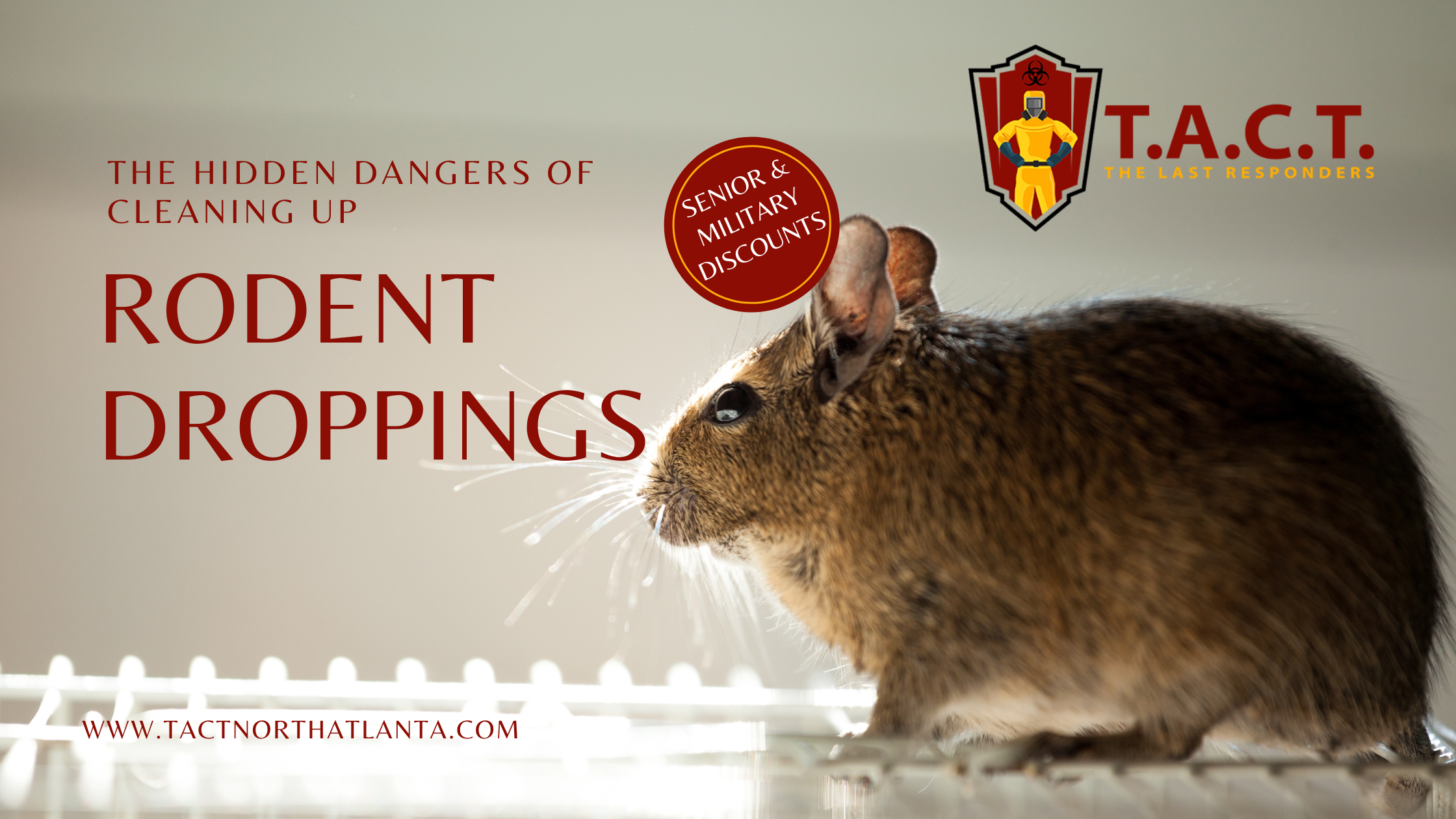Mouse Flu: Hantavirus Symptoms, Treatment & Prevention Guide

Mouse Flu: Essential Facts About Hantavirus Infection
Mouse flu represents one of the most serious rodent-borne diseases affecting humans. This severe human disease, caused by a virus found in rodents, results from exposure to infected rodents and their waste, and can escalate from flu-like symptoms to life-threatening complications within days.
Understanding hantavirus infection is critical for protecting yourself and your loved ones, especially if you live in rural areas or work around rodents. The virus found in rodents can infect humans through exposure to infected animals or their excretions. The disease progresses rapidly, making early recognition and prevention your most powerful tools against this potentially fatal infection.
This comprehensive guide will equip you with the knowledge needed to identify symptoms, understand your risk factors, and implement effective prevention strategies that could save your life.
Understanding Hantavirus: The Cause of Mouse Flu
Hantavirus is a family of viruses that cause severe respiratory and kidney complications in humans. The most concerning forms include hantavirus pulmonary syndrome (HPS) and hemorrhagic fever with renal syndrome (HFRS), both of which can be fatal without prompt medical intervention. Animal models are frequently used in research to better understand hantavirus transmission, pathogenesis, and disease progression.
The virus spreads to humans primarily through deer mice, though certain other rodent species can also carry the infection. However, only mice and specific rodent species are known carriers of the virus; not all rodents pose a risk. When an infected mouse or other carrier rodent urinates, defecates, or produces saliva, they contaminate their environment with viral particles that remain dangerous for extended periods.
Transmission occurs through three main routes: inhaling contaminated dust particles, direct contact with infected rodent waste such as rodent urine, or being bitten by an infected rodent. The airborne route poses the greatest risk, as viral particles can become suspended in air when disturbing contaminated areas. The virus can spread from an infected mouse to humans through these exposure routes, especially in areas where infected rodents are present.
Hantavirus cardiopulmonary syndrome (HCPS) represents the most severe manifestation of the disease. This condition attacks the cardiovascular and respiratory systems simultaneously, creating a medical emergency that requires immediate intensive care treatment.
Types of Hantavirus Infections
Hantavirus infections in humans can lead to two major types of severe disease: hantavirus pulmonary syndrome (HPS) and hemorrhagic fever with renal syndrome (HFRS). Both are caused by different strains of the hantavirus family, and while they share some early symptoms, their progression and impact on the body can differ significantly.
Hantavirus pulmonary syndrome is the most common form seen in the United States, especially in states west of the Mississippi River. The primary carrier here is the deer mouse, which sheds the virus in its urine, droppings, and saliva. Humans can become infected through direct contact with these materials or by inhaling dust contaminated with viral particles. Early symptoms of HPS, such as fever, muscle aches, and abdominal pain, are easily confused with other infectious diseases like influenza, making early diagnosis challenging. As the infection progresses, late symptoms can develop rapidly, including trouble breathing, chest pain, and coughing as the lungs fill with fluid. Without prompt treatment, HPS can quickly become life-threatening, requiring intensive care and oxygen therapy to support breathing.
Hemorrhagic fever with renal syndrome, on the other hand, is more commonly reported in Europe, Asia, and Africa. This group of clinically similar illnesses is caused by different strains of hantavirus and is characterized by high fever, abdominal pain, and kidney involvement that can lead to renal failure. Like HPS, HFRS is transmitted through close contact with infected mice or their urine and droppings. The severity of renal syndrome can vary, but in severe cases, patients may experience internal bleeding and require hospitalization.
Because the early symptoms of hantavirus infection are flu-like and non-specific, they can be easily overlooked or mistaken for less serious illnesses. Recognizing the signs—especially after potential rodent exposure—is crucial for early diagnosis and effective treatment. There is currently no specific treatment or vaccine for hantavirus infections, so supportive care in a hospital setting is essential. Intensive care, including oxygen therapy and careful monitoring, can significantly improve outcomes for those with severe disease.
The risk of hantavirus infection increases with close contact with infected rodents or their nesting materials, particularly in areas where the virus is common. The severity of illness can depend on the specific strain of the virus and the individual’s overall health, making it vital to seek medical attention if symptoms persist or worsen. Continued research and public health education are key to improving disease control and reducing the impact of hantavirus infections on communities.
By understanding the different types of hantavirus infections and their potential severity, individuals and healthcare providers can work together to recognize early symptoms, reduce transmission risks, and improve outcomes for those affected by these serious diseases.
Recognizing Mouse Flu Symptoms
Mouse flu symptoms develop in distinct phases, with the first stage presenting early, flu-like signs that make early recognition challenging but crucial for survival. The disease often mimics common illnesses, leading to delayed diagnosis and treatment.
About half of patients may go on to develop advanced symptoms such as respiratory distress.
Early Stage Symptoms
The initial phase typically begins one to five weeks after exposure. Patients experience fever, muscle aches, headaches, and fatigue that closely resemble seasonal flu. Nausea, vomiting, and diarrhea may also occur, further complicating accurate diagnosis.
Abdominal pain represents a distinguishing feature that sets hantavirus infection apart from typical flu. This pain is often severe and persistent, accompanied by a general feeling of illness that seems disproportionate to other symptoms.
Advanced Stage Complications
As the disease progresses, respiratory symptoms become prominent and life-threatening. The virus targets lung cells, causing damage that leads to respiratory symptoms and fluid accumulation in the lungs. Patients develop shortness of breath, rapid heartbeat, and low blood pressure as fluid accumulates in the lungs.
The transition from early to advanced symptoms can occur rapidly, sometimes within hours. This sudden deterioration creates a narrow window for effective medical intervention, emphasizing the importance of seeking immediate care when symptoms appear after potential rodent exposure.
In severe cases, patients may experience internal bleeding, kidney failure, and complete respiratory collapse. These complications require intensive medical support including mechanical ventilation and dialysis.
Identifying Your Risk Factors
Understanding who faces the highest risk of hantavirus infection helps prioritize prevention efforts and guide appropriate safety measures.
High-Risk Occupations
Laboratory workers handling rodents face significant exposure risks through direct contact with infected animals. Pest control professionals encounter contaminated environments regularly, making proper protective equipment essential for their safety.
Agricultural workers, particularly those working in barns, storage facilities, and grain silos, frequently encounter rodent infestations. Construction workers renovating older buildings may disturb accumulated rodent waste, creating dangerous airborne exposure.
Park rangers, wildlife biologists, and outdoor recreation professionals working in areas with high rodent populations need specialized awareness of hantavirus risks and prevention protocols.
Geographic and Environmental Risk Factors
Rural areas with significant deer mouse populations pose elevated risks, particularly in the western United States where most cases occur. However, hantavirus infections have been documented across the country, making awareness important regardless of location.
People living in areas experiencing rodent population booms face increased exposure risks. Climate conditions, food availability, and habitat changes can lead to sudden increases in local rodent populations and associated disease transmission.
Homes with existing rodent infestations create ongoing exposure risks for all occupants. Cabins, vacation homes, and properties left vacant for extended periods often develop unnoticed infestations that pose serious health threats upon reoccupation.
Diagnosis and Treatment Options
Diagnosing hantavirus infection requires high clinical suspicion combined with specific laboratory testing. The similarity to other illnesses makes accurate diagnosis challenging without considering exposure history.
If hantavirus infection is suspected, it is crucial to see a physician immediately to ensure prompt diagnosis and treatment. It is important to note that complete recovery from hantavirus infection may take several weeks to months.
Diagnostic Challenges
Healthcare providers must maintain awareness of hantavirus possibility when treating patients with flu-like symptoms and potential rodent exposure. Blood tests can detect antibodies and viral genetic material, but results may take time to obtain.
Early diagnosis significantly improves patient outcomes, making it crucial to inform healthcare providers about any recent rodent exposure or activities in potentially contaminated areas. Detailed exposure history helps guide appropriate testing and treatment decisions.
Chest X-rays and other imaging studies may reveal fluid accumulation in the lungs, supporting the diagnosis when combined with clinical symptoms and exposure history.
Treatment Approaches
No specific antiviral medication exists for hantavirus infection, making supportive care the primary treatment approach. Early medical intervention focuses on maintaining adequate oxygenation and supporting cardiovascular function. Administering fluids is essential to maintain hydration and support kidney function during treatment.
Patients with respiratory distress require immediate hospitalization in intensive care units. Treatment may include supplemental oxygen, mechanical ventilation, and medications to support blood pressure and heart function.
In cases involving kidney complications, dialysis may become necessary to support renal function while the body fights the infection. Close monitoring allows medical teams to address complications quickly as they develop.
The key to successful treatment lies in recognizing symptoms early and seeking immediate medical attention. Patients who receive prompt medical care have significantly better outcomes than those who delay treatment.
Effective Prevention Strategies
Preventing hantavirus infection requires a comprehensive approach focusing on avoiding rodent contact and eliminating exposure opportunities. It is essential to safely clean areas contaminated by rodents, such as droppings, urine, or nests, to prevent hantavirus transmission.
Environmental Control Measures
Sealing entry points represents the most effective long-term prevention strategy. Examine your property for gaps around pipes, vents, doors, and windows that might allow rodent access. Steel wool and caulk provide effective barriers against rodent intrusion.
Remove food sources that attract rodents to your property. Store food in sealed containers, clean up spills immediately, and maintain clean cooking and eating areas. Pet food and bird seed require secure storage to prevent attracting rodents.
Eliminate nesting sites by clearing brush, removing debris piles, and maintaining proper distances between vegetation and structures. Woodpiles should be stored away from buildings and elevated off the ground.
Safe Cleanup Procedures
When cleaning areas with potential rodent contamination, wear protective equipment including rubber gloves, eye protection, and N95 respirators. Never sweep or vacuum contaminated areas, as this can create dangerous airborne particles. Disturbing contaminated areas can lead to virus shedding, increasing the risk of airborne transmission.
Wet contaminated areas with disinfectant solution before cleanup to reduce dust generation. A mixture of bleach and water (1:10 ratio) provides effective disinfection for most surfaces and materials.
Double-bag all contaminated materials and dispose of them according to local regulations. For more detailed guidance on biohazard cleanup, wash all clothing and equipment in hot water with detergent, and shower thoroughly after completing cleanup activities.
Personal Protection Measures
When working in potentially contaminated areas, wear appropriate protective equipment and follow established safety protocols. Plan work activities to minimize dust generation and limit exposure time.
Wash hands thoroughly with soap and warm water after any potential exposure to rodents or their waste. Hand sanitizer provides additional protection but should not replace proper handwashing.
Seek medical attention immediately if you develop flu-like symptoms after potential rodent exposure. Early medical intervention provides the best opportunity for successful treatment.
Protecting Your Family's Health
Hantavirus infection poses a serious threat that demands respect and preparation. While the disease can be fatal, proper prevention measures significantly reduce your risk of exposure.
Stay vigilant for signs of rodent activity around your property, and address infestations promptly using safe cleanup procedures. Educate family members about the risks and ensure everyone understands proper prevention protocols.
Remember that seeking immediate medical attention after potential exposure could save your life. Healthcare providers can only help if they know about your exposure history and understand the possibility of hantavirus infection.
Take action today to assess your property for rodent risks and implement appropriate prevention measures. Your proactive approach to hantavirus prevention protects not only yourself but everyone who shares your environment.
Meta data
Meta title
Mouse Flu: Hantavirus Symptoms, Treatment & Prevention Guide
Meta description
Learn about mouse flu (hantavirus infection) - its symptoms, treatment options, and essential prevention tips to protect your family's health.



